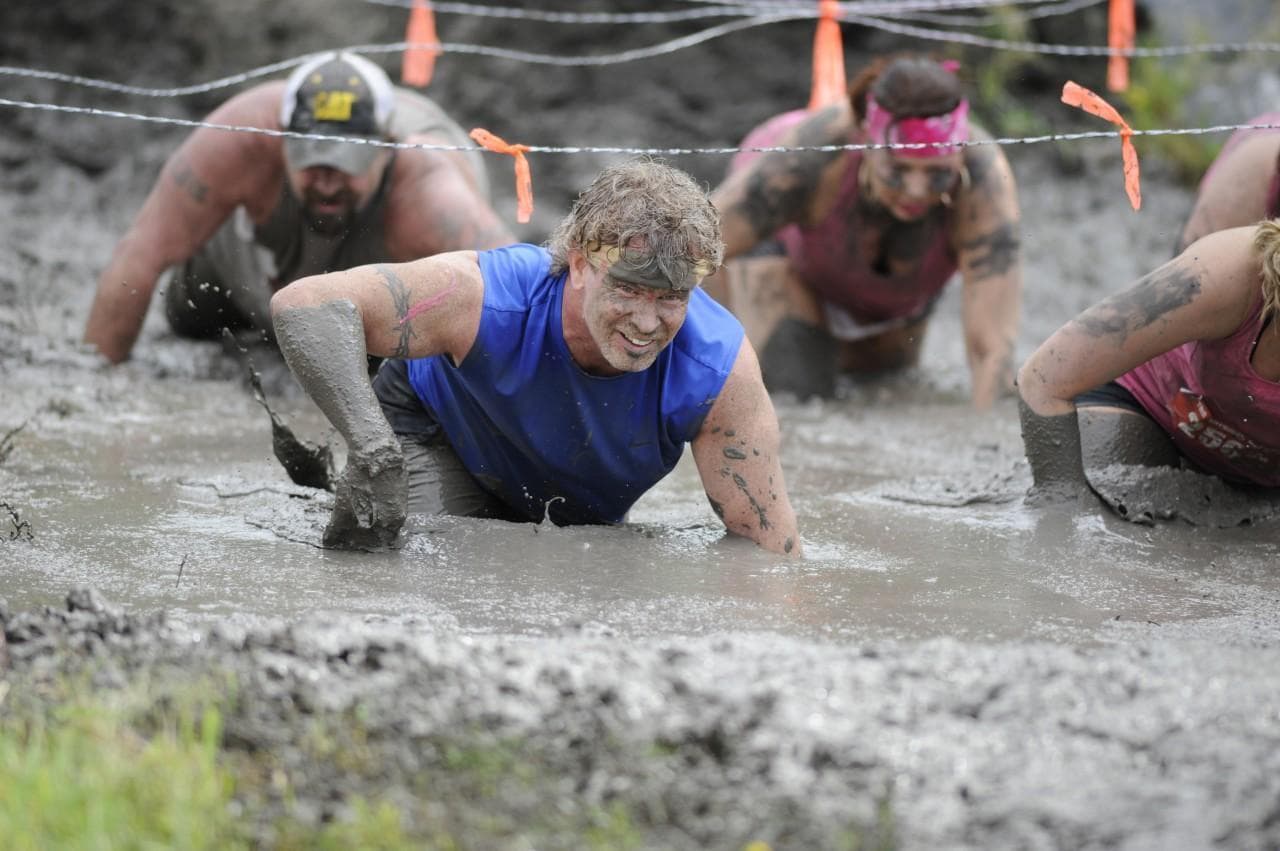Advertisement
In Depth
Questions About Safety Persist After Tough Mudder Death
Resume
To say that adventure racing is a trend might be an understatement. Hundreds of thousands of self-styled urban warriors are paying good money to be battered, bruised and exhausted by mud runs, obstacle courses, and so-called death races. The Tough Mudder is one of the fastest growing of such phenomena. The race series began in 2010 and has attracted a total of 750,000 participants.
Tough Mudder markets its race as "probably the toughest event on the planet." Each race is between 10 and 12 miles long and designed to test strength, stamina, mental grit, and camaraderie. Obstacles with names like Arctic Enema, Electroshock Therapy, and Balls to the Wall suggest that danger is a commodity the Tough Mudder is selling.
"I think the real physical challenge of doing one of these obstacle races is very attractive to people in this day and age," said Elliott Woods, a veteran of the Iraq War who now works as a writer and photographer. "As much time as we spend sitting at cubicles and all that, I think they can market that very heavily to people who are desperate for it."
Woods examined the safety measures at the Tough Mudder for Outside Magazine after a participant, Avi Sengupta, drowned while participating in the Mid-Atlantic Tough Mudder in April.
"Avi Sengupta worked at an internet marketing firm, and for the year and a half prior to the race he'd been exercising and dieting rigorously and really turned his life around from a fitness perspective," Woods said. "So for Avi it seemed like this was the culmination of a long hard road to fitness."
Sengupta drowned on an obstacle called Walk The Plank. For this obstacle, contestants scale a wall of two-by-six planks and summit a platform. At the top of the platform, they jump 15 feet down into a pool of deep muddy water, swim across the pond, and climb out a cargo net on the other side.
"On the day that Avi ran the Tough Mudder in West Virginia, there was a lot of overcrowding on the plank," Woods explained. "And when Avi jumped he didn't resurface. Even though his friends within 30 seconds began trying to alert lifeguards to the fact that he hadn't resurfaced, it took four minutes for a rescue diver to go underwater and begin searching for him and somewhere between 8.5 and 10.5 minutes for him to be retrieved from the water."
By the time Sengupta was pulled from the water he had suffered catastrophic brain damage.
After the accident, a MedPrep Consulting Group audited Tough Mudder's medical services. According to Woods, MedPrep's CEO Stu Weiss was in shock when he viewed a participant's video of the drowning.
"He said several times as we watched the video, 'Wow, wow, I've never seen anything like this before.'" Woods recalled. "And he meant at the Tough Mudders he had attended up to that point he had never seen anything like that before. So he was surprised to see the scene in those videos."
Woods said he would not participate in Tough Mudder.
"I did a lot of this kind of stuff when I was actually in the military, and honestly I can understand why people do it — the camaraderie, the teamwork, the sense of accomplishment — but I think that when people do it they are entitled to proper safety procedures on behalf of the company."
This segment aired on December 14, 2013.